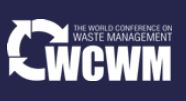Using a Baseline to Improve Accuracy of Waste Diversion Rate
DOI:
https://doi.org/10.17501/26510251.2021.1101Keywords:
Waste, Diversion Rate, Baseline, LandfillAbstract
As part of its new sustainability goal “Zero Waste”, General Motors aims to divert 90% of its total waste generation from landfills and incineration with or without energy recovery by 2025. To achieve this goal, it is necessary to determine the correct method to track the percentage of waste diverted over time, since it will be the key performance indicator (KPI) of the program. The most accepted method to calculate this KPI is by dividing the total amount of waste diverted from landfills and/or incinerators by the total amount of waste generated in a specific time period. This methodology presents a simple snapshot of the current performance and does not fully address the long-term performance. The new proposal aims to track performance over time using similar approach as defined in the revised edition of the Greenhouse Gas Protocol. The new methodology
uses a baseline to track performance and determines the diversion rate by comparing the total nondiverted material against the baseline. This method has shown accurate percentage of diversion rate and improved the company’s data management since past data was used to calculate the baseline.
Downloads
References
Corporate Sustainability Practices: Waste & Recycling (2013). Retrieved from
http://info.greenbiz.com/rs/greenbizgroup/images/Corporate%20Sustainability%20Practices%20-
%20Waste%20Reduction%20Report.pdf?mkt_tok=3RkMMJWWfF9wsRojuajOZKXonjHpfsX86uwvUKeylMI
%2F0ER3fOvrPUfGjI4FSsdkI%2BSLDwEYGJlv6SgFSLHEMa5qw7gMXRQ%3D
Demirbas, A. (2011). Waste management, waste resource facilities and waste conversion processes. (2011).
Energy Conversion and Management, 52(2), 1280-1287. Retrieve from
https://doi.org/10.1016/j.enconman.2010.09.025.
E. Nehrenheim, (2014). Waste Management: Introduction, Reference Module in Earth Systems and
Environmental Sciences, Elsevier. https://doi.org/10.1016/B978-0-12-409548-9.09166-1
General Motors Corporate Sustainability Report (2019). Retrieved from
https://www.gmsustainability.com/material-topics/designing-for-the-environment.html
Hoornweg, D., & Bhada-Tata, P. (2012). What a Waste: A Global Review of Solid Waste Management. Urban
development series; knowledge papers no. 15. World Bank, Washington, DC. © World Bank.
https://openknowledge.worldbank.org/handle/10986/17388
TRUE Zero Waste System (2020, June). Retrieved from
https://true.gbci.org/sites/default/files/resources/TRUE_RatingSystemGuide_r1.pdf
Underwriters Laboratories 2799 Environmental Claim Validation Procedure for Zero Waste to Landfill (2017,
March). Retrieved from
https://www.shopulstandards.com/ProductDetail.aspx?UniqueKey=32526
U.S Environmental Protection Agency (EPA), Waste Management Hierarchy and Homeland Security Incidents.
Retrieved from
Downloads
Published
How to Cite
Issue
Section
License

This work is licensed under a Creative Commons Attribution 4.0 International License.







